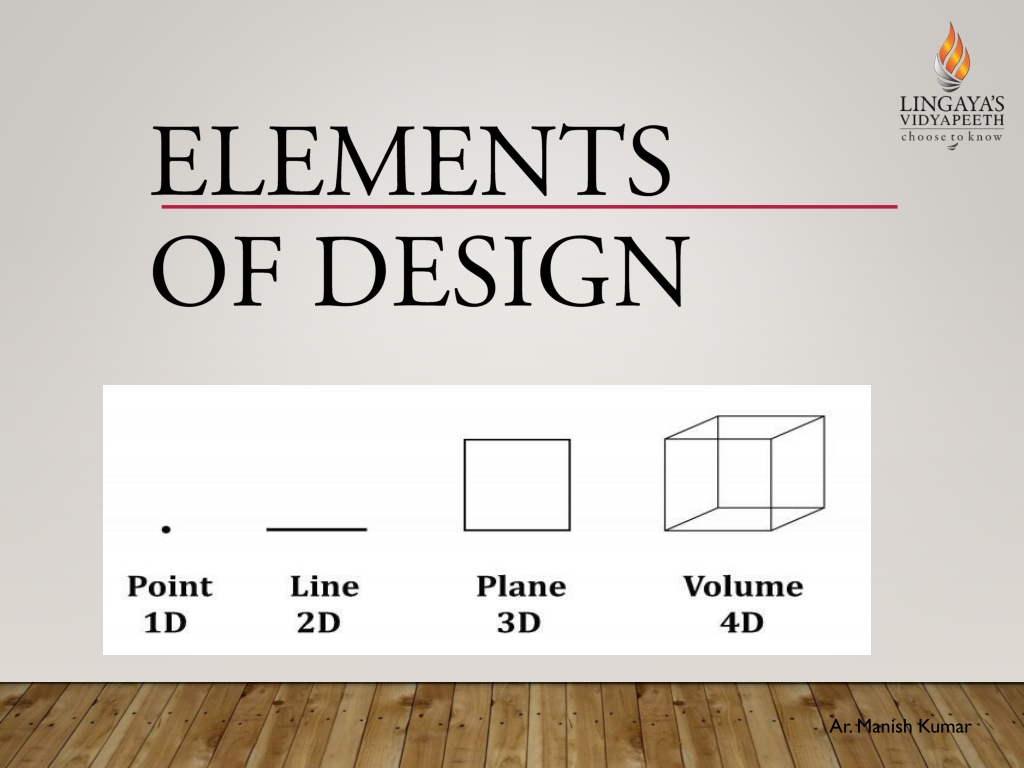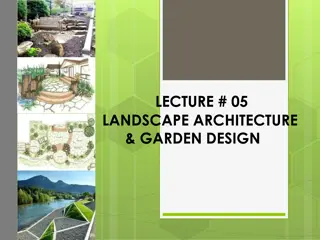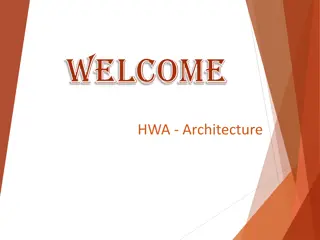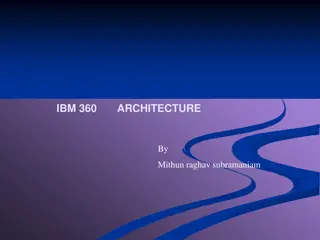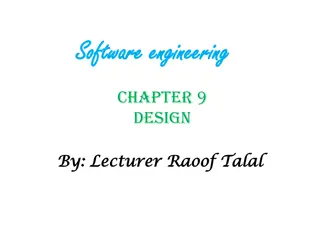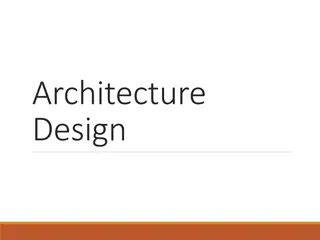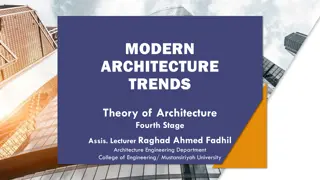Elements of Architecture and Design
Exploring the foundational elements of architecture and design, this content delves into the significance of points, lines, and planes in creating visual aesthetics. It highlights the importance of geometric elements, such as points and lines, in shaping designs and showcases renowned architectural landmarks like the Space Needle. Understanding the role of these elements is crucial in manipulating planes and creating impactful visual impact in architectural compositions.
Download Presentation

Please find below an Image/Link to download the presentation.
The content on the website is provided AS IS for your information and personal use only. It may not be sold, licensed, or shared on other websites without obtaining consent from the author.If you encounter any issues during the download, it is possible that the publisher has removed the file from their server.
You are allowed to download the files provided on this website for personal or commercial use, subject to the condition that they are used lawfully. All files are the property of their respective owners.
The content on the website is provided AS IS for your information and personal use only. It may not be sold, licensed, or shared on other websites without obtaining consent from the author.
E N D
Presentation Transcript
the foundation in every architecture design smallest part and the most basic element a geometric element in space with zero dimensions owns its basics in width and length, and the smallest area.
A point can make people look and concentrate at as it directs attentions. One point a center or a mole or a concentration of forms or objects near or close together. Two points make a connection and see a line. Three points to interpret them as a triangle
A number of points can create different elements that are important to showcase a design Any object, of course, is made up of millions of points. Therefore, a point is unavoidable in architecture design.
a visual element of length an elementary design basic defines the position and direction of design the connection of two or more dots or points have length, but not volume
Vertical Lines dignity, formal feeling, strength Horizontal Lines peaceful and calming effect, informal feeling. Diagonal Lines unstable, feeling of movement and direction Curved Lines elegance nature graceful, create softness, and movement, and evoke
The Space Needle Architect - John Graham and company - 1961-1962 (was built for the 1962 World s flair) - Washington, United States Year Place This is the observation tower and also a landmark of the Pacific Northwest which is a symbol of Seattle.
Atwo dimensional form Alevel surface with length and width but not depth. Aflat plane can be formed by point (zero dimension), line (one dimension), and shape ( two or three dimension).
INARCHITECTURE WE MANIPULATETHREE GENERICTYPES OF PLANES. 2. Wall Plane {Vital for enclose of architecture, active in our field of vision} 3. Base Plane {with ground plane the building can merge, rested firmly or be elevated above it} 1. Over Head Plane {Ceiling Plane or Roof Plane}
THE PRINCIPLES OFARCHITECTURAL DESIGN CAN BEAPPLIEDTO VARIOUS TYPES OF PLANE FOR GREATER EFFECT AND RESULTING STATEMENT RELATIVE TO THE DESIGN SOLUTION. A plane may be flat, curve, twisted, shaped, solid, open or transparent. We may be concerned with its surfaces, edges or inner structure.
Combination of planes form a volume Conceptually has 3 Dimension ( length, width, depth ) Solid enclosed weighty mass Different Types of volume (Sphere, Cylinder, Pyramid, Cube, Cone )
In architecture, a volume can be seen to be either a portion of space contained and defined by wall, floor, and ceiling or roof planes or a quantity of space displaced by the mass of a building Plan and section space defined by wall, floor and ceiling Elevation space displaced by the mass of a building.
Berlin Zeiss Planetarium, Berlin, Germany Architect Erhard GiBke Year 1985 La-Tete-au-Carre, Nice, France Architect Yves Bayard Francis Chapuis Year 1996
ADDITIVE TRANSFORMATIONS - A FORM CAN TRANSFORMED BY THE ADDITION ELEMENTS VOLUME. BE OF ITS TOM Nakagin Capsule Towers, Tokyo, Japan This principle is normally depends on the imagination of the architect as it can be done in various ways.
